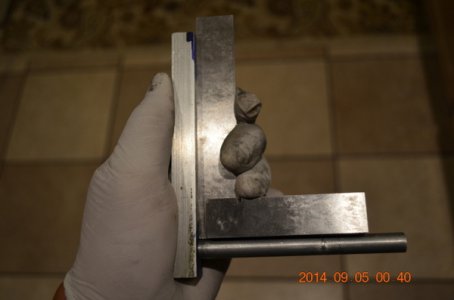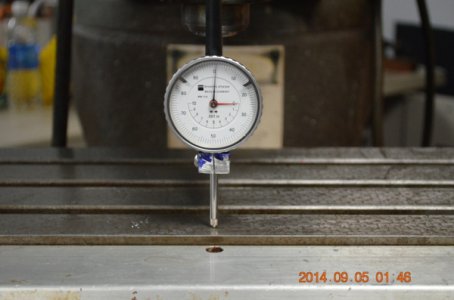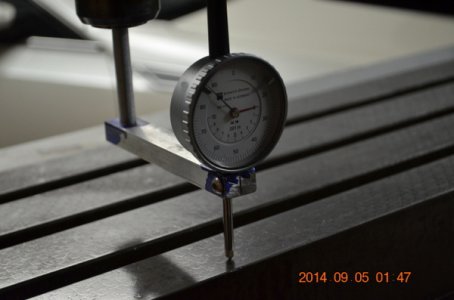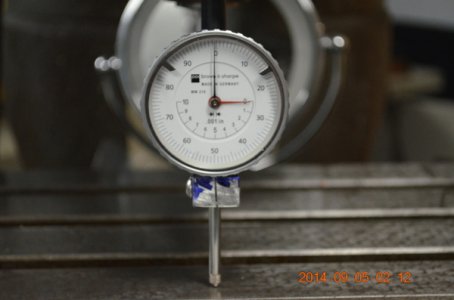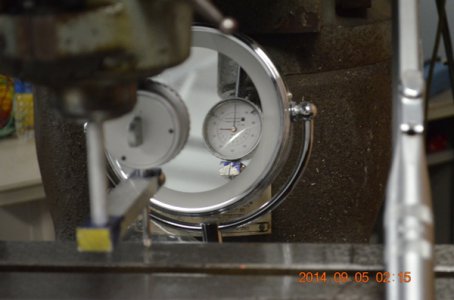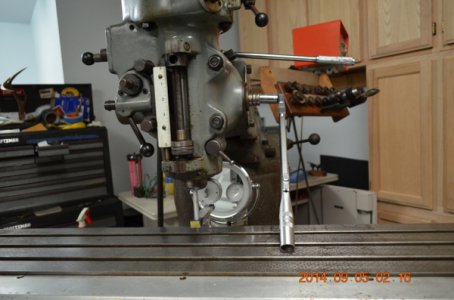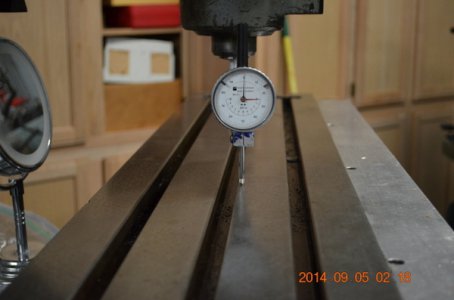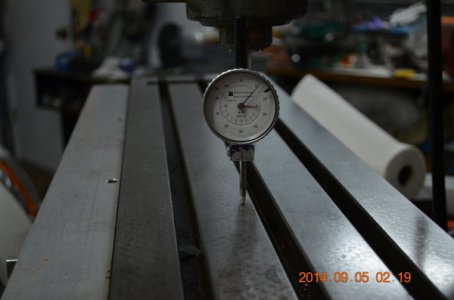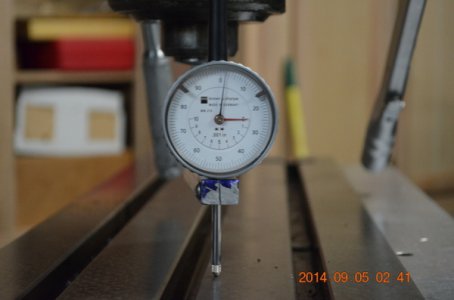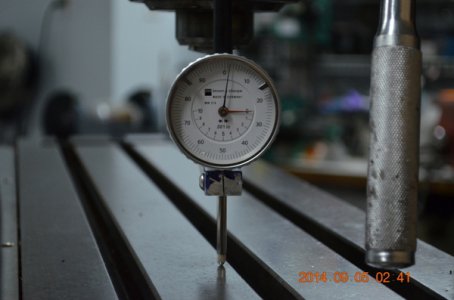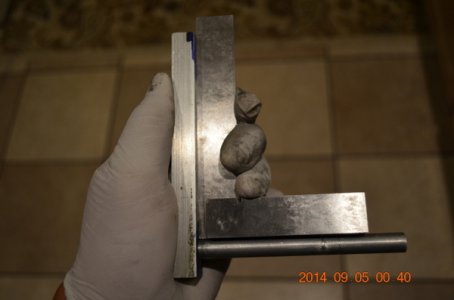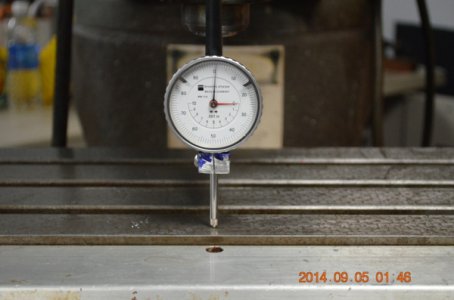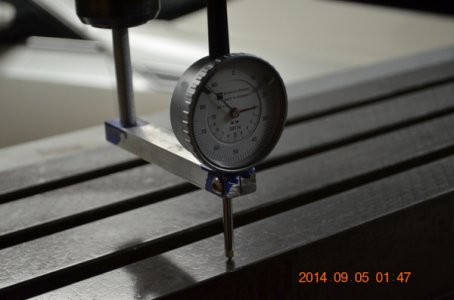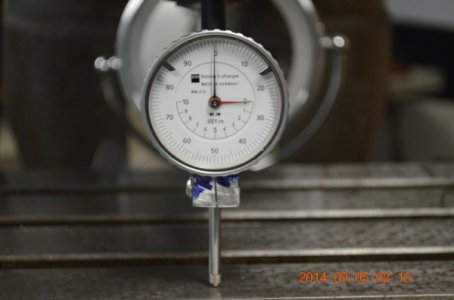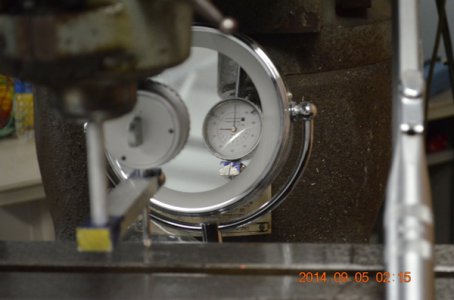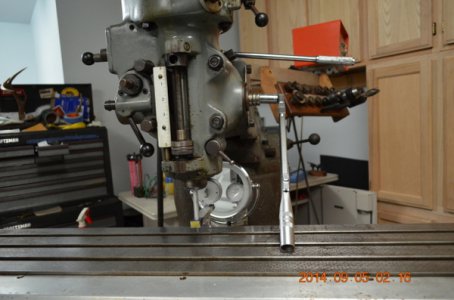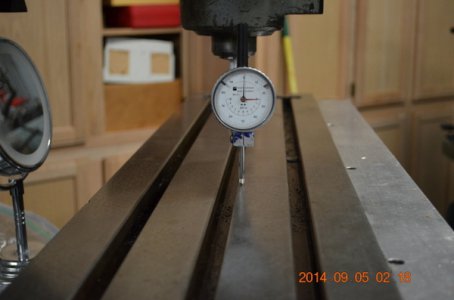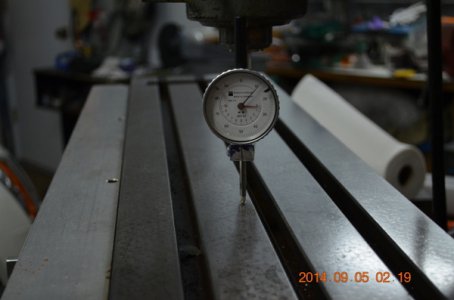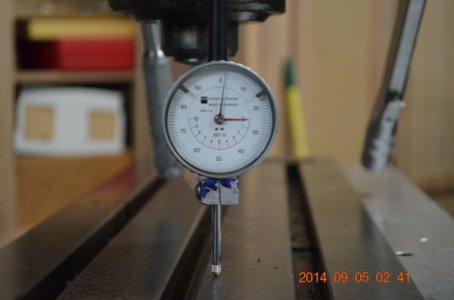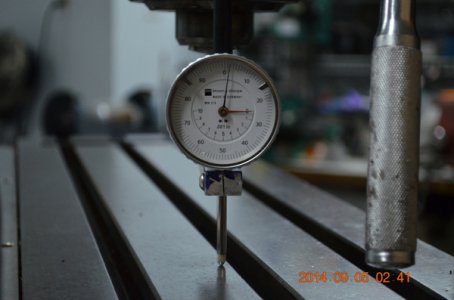- Joined
- Jul 13, 2014
- Messages
- 1,054
Finally got the new to me Bridgeport Series 1 2 HP mill and a 12x36 lathe all moved in and wired up. Currently going through the operations, maintenance, and set up procedures. I've read and viewed a few videos and got some input from machinist friends on the how to operate and set up the machines. Learning this machines for someone with no machining background is like drinking from a fire hose. Glad I am retired I can stay in the garage all day.
One of the mill procedures I am about to go into is the tramming/sweeping the head/table with the indicator on a rod attached to the spindle. Unfortunately, I do not have the proper rod/indicator combination to properly do the procedure according to all the instructions and videos I gathered. The closest thing I can use is the case/ammo run out gauge kit from RCBS that I already have. I cam use the indicator and the rod combination, but the sweep radius is more like 2 1/2 inches, limited by the cross bar connecting the indicator to the rod that is attached to the spindle.
Now the questions.
What will I miss if I were to keep the indicator stationary and I will move the table around at any place from end to end, front to back? Will I accomplish the same thing with the table stationary and rotate the indicator? What is the end result difference between the two methods?
Right now the machine is set at the zero mark for both scales, tilt and nod.
What else do I need to know about these machines that is not clearly spelled out in any of the standard manuals?
Pictures of the machines.
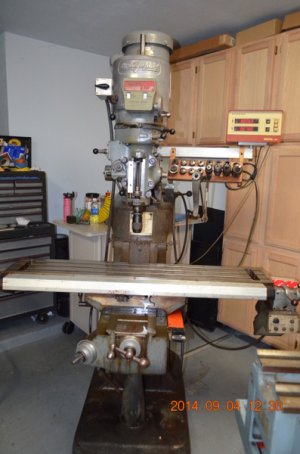
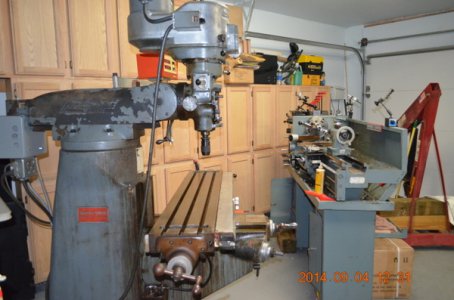
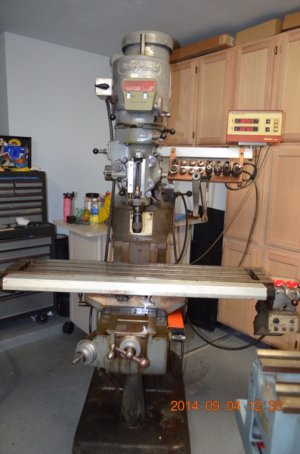
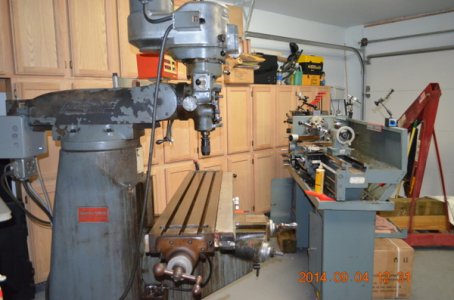
One of the mill procedures I am about to go into is the tramming/sweeping the head/table with the indicator on a rod attached to the spindle. Unfortunately, I do not have the proper rod/indicator combination to properly do the procedure according to all the instructions and videos I gathered. The closest thing I can use is the case/ammo run out gauge kit from RCBS that I already have. I cam use the indicator and the rod combination, but the sweep radius is more like 2 1/2 inches, limited by the cross bar connecting the indicator to the rod that is attached to the spindle.
Now the questions.
What will I miss if I were to keep the indicator stationary and I will move the table around at any place from end to end, front to back? Will I accomplish the same thing with the table stationary and rotate the indicator? What is the end result difference between the two methods?
Right now the machine is set at the zero mark for both scales, tilt and nod.
What else do I need to know about these machines that is not clearly spelled out in any of the standard manuals?
Pictures of the machines.




Last edited:

